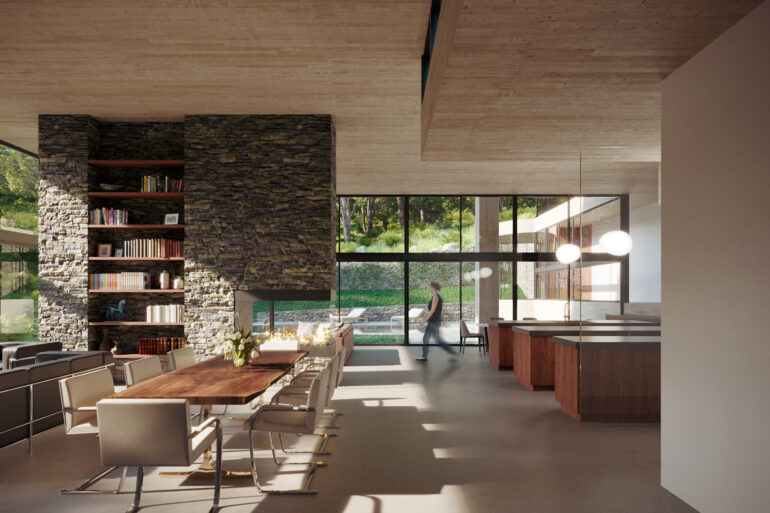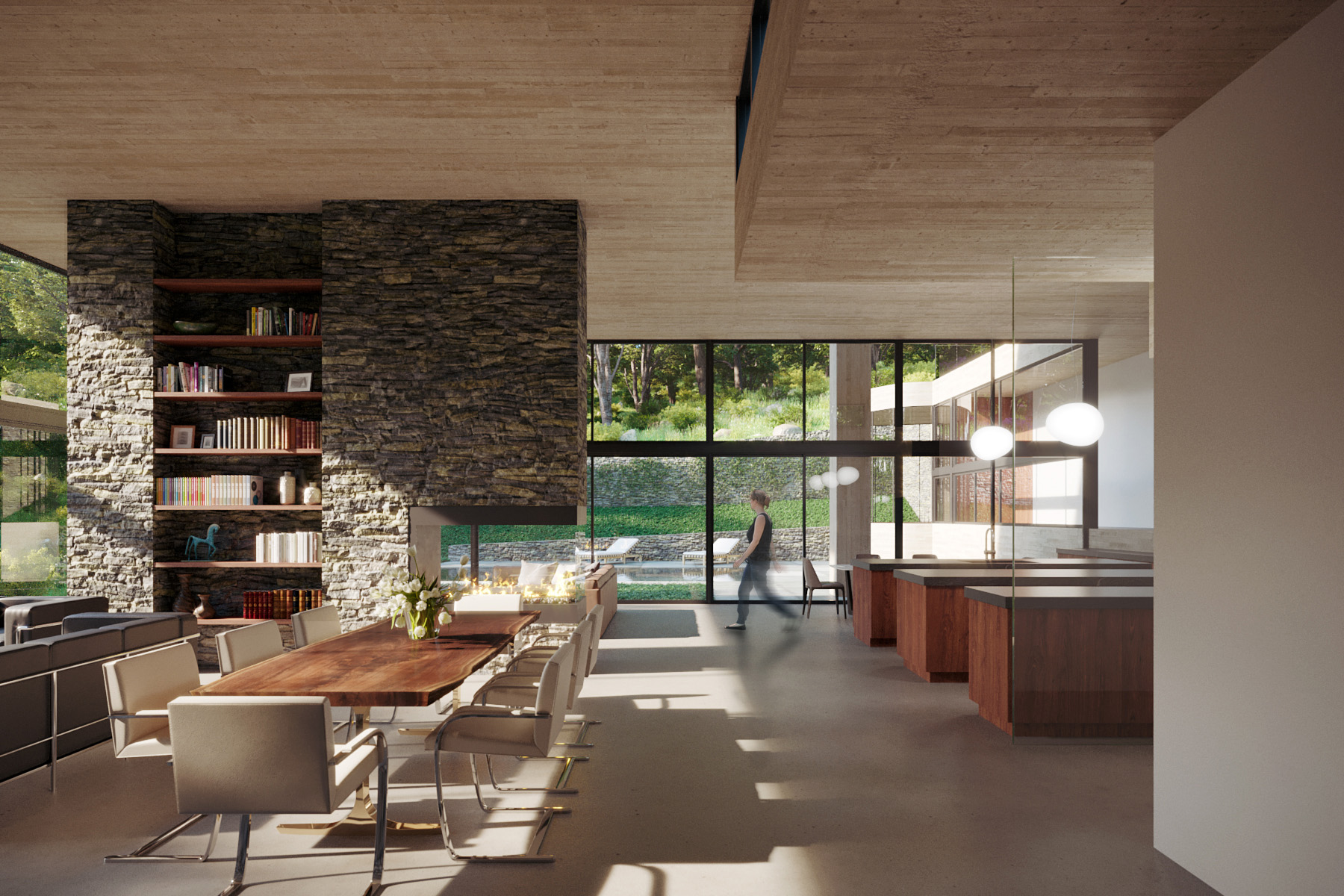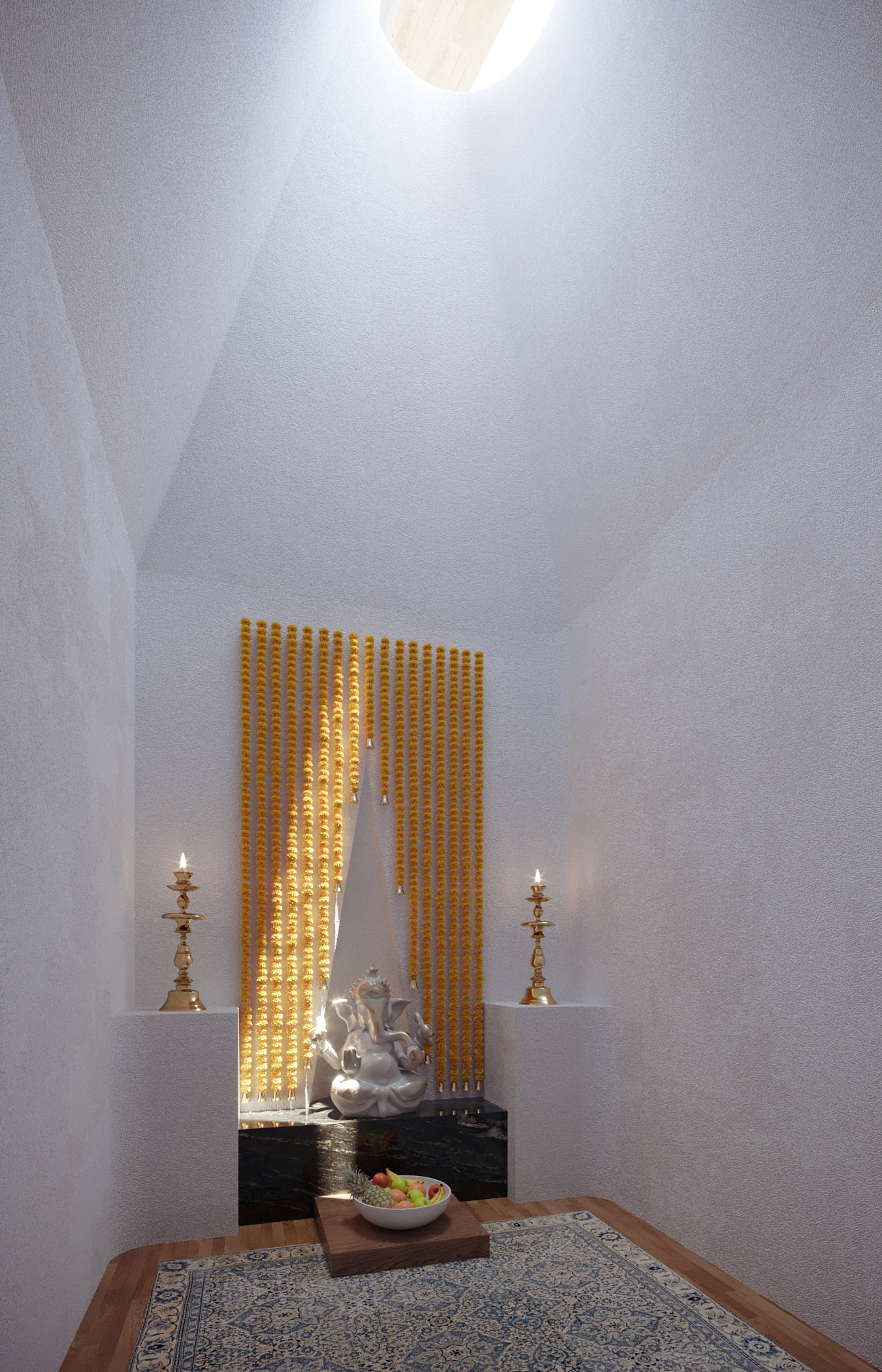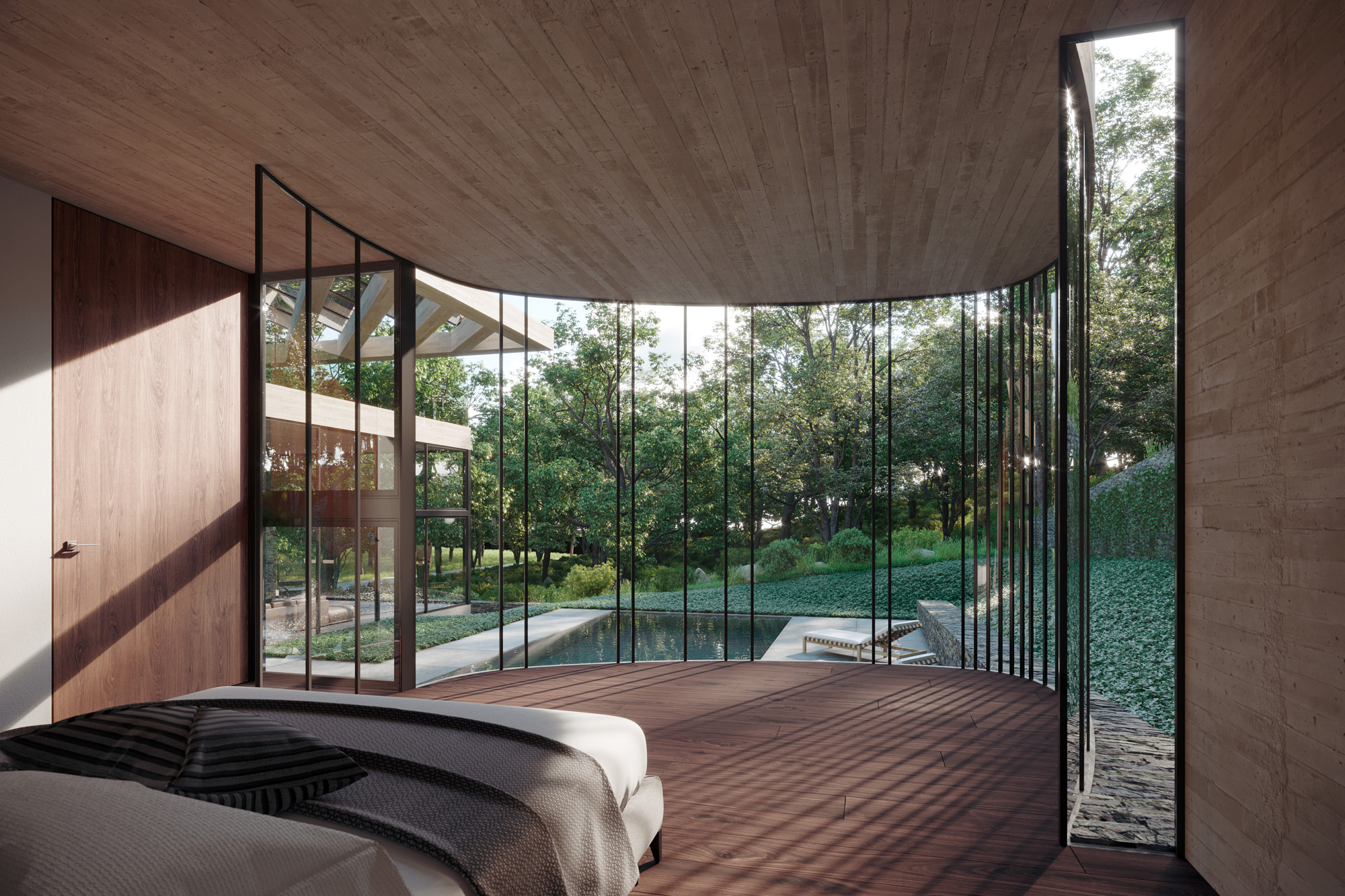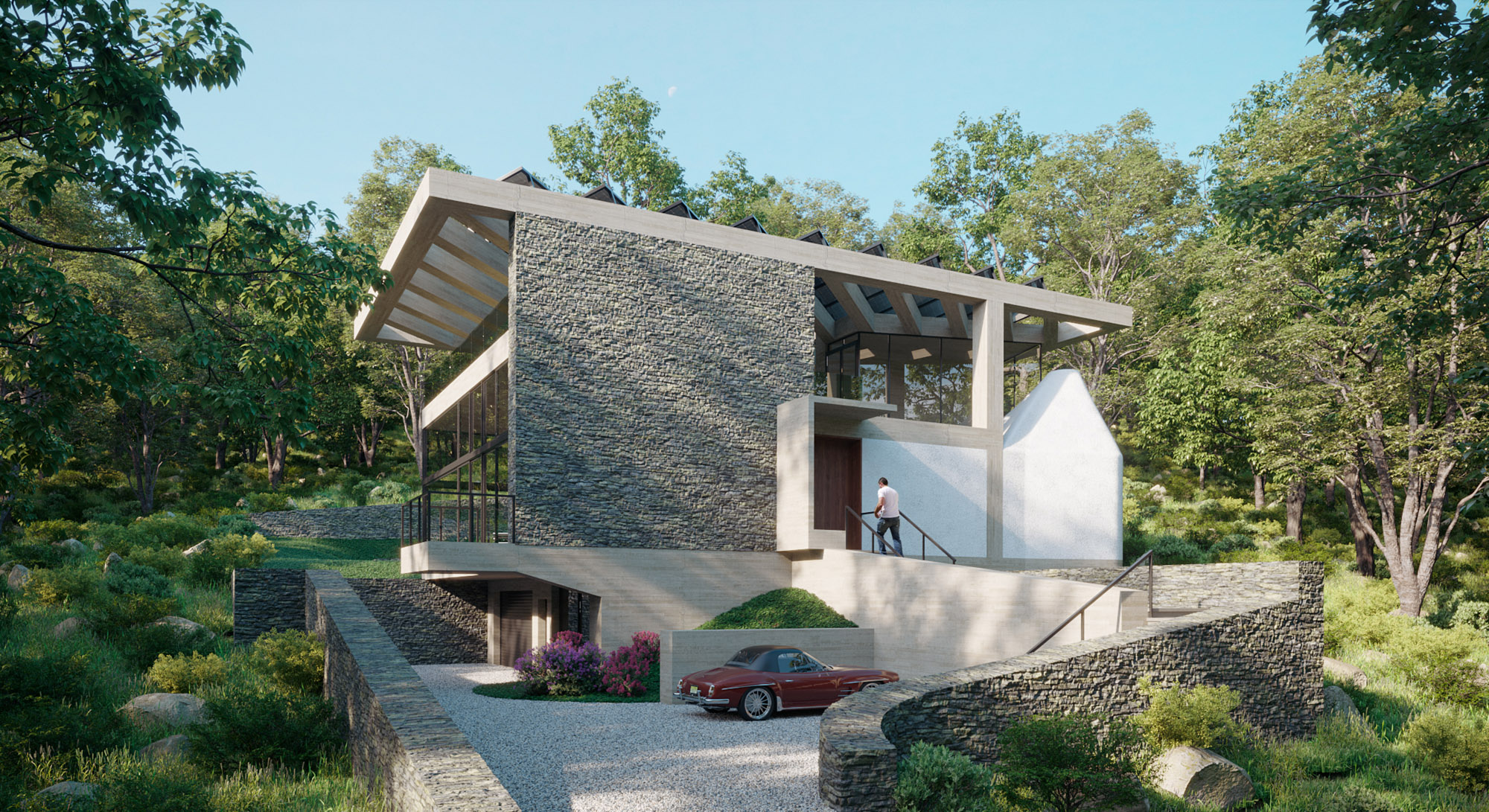Architect / Designer:
Studio:
Design Team:
Copyright:
Country:
This new 7,000 sq.ft. house on a steep hillside in suburban Essex County, NJ is carefully integrated into the one small buildable area of the highly regulated site. The design provides the client with an economical and efficient house that meets all his needs within the site’s strict environmental controls. The house terraces into the hillside, with the main floor stepping up the hill, and the lower level tucked into the slope. The roof deck over the bedroom wing is set near the hill grade with access onto the roof. Stepped retaining walls at the back yard provide for a gradual integration into the hillside while channeling runoff away from the building. The rooftop deck is covered by a concrete lattice supporting a solar array. The owner’s interest in green design extends to a greywater system and lighting controls.
The concrete structure and shaded roof terrace recall the Indian modern architecture of Balkrishna Doshi and Le Corbusier, while the use of natural fieldstone is often found in surrounding traditional homes. The project respects and celebrates the site’s environmental challenges, finding a nexus between the local vernacular and the client’s love of modern architecture.
Stormwater coursing down the hill is channeled on terraces to enter the courtyard but bypass the house; the landscape creates a series of structured engagements with the topography: retaining walls ascend in modestly scaled steps, creating layers of plantings from finished near the house to rough and rustic at the edge of the wooded hillside.
Vastu principles urge use of square grids, centered on a courtyard. It mandates that puja rooms are oriented northeast, and highlights the integration of water into the house. Once the section concept was worked out, the Vastu plan directions were overlaid on the program. The resulting house uses a square grid to develop a central courtyard with the pool acting as a focal point.
Looking at the Indian houses of Le Corbusier and Doshi was inspirational for us. The house’s roof terrace, accessed from the hillside, is shaded by a floating trellis supporting solar panels, takes the Villa Shodan’s roof to serve an aggressive commitment to solar power use. The stucco-clad puja room proudly shifts away from the body of the house to provide the correct orientation; lit only from above, it is a serene, spiritual place. Light spilling down the conical roof, we imagined, would highlight the ascending incense, a central element in the devotional rite.
The preservation of the trees and retention of soils was critical to the design. The development of the long-vacant site in a sensitive way preserves groundwater movement across the neighborhood. The use of fieldstone as a key building material integrates with other buildings and site features in the area. The energy efficiency of the house exceeds township code requirements.
Building Studio Architects
Founded in New York City in 1992, Building Studio Architects is a full-service architecture and interior design firm with experience in a broad range of project types, including new construction and rehabilitation of institutional, commercial, residential, and multi-family buildings in addition to private residential work.
The partners bring unusual strengths to a small firm. Partner Michael Goldblum, a Commissioner at the New York City Landmarks Preservation Commission, is LEED certified and brings tremendous expertise in historic preservation. Partner John Field, employs his master’s degree in Industrial Design to create buildable, meticulously detailed, coordinated construction projects. They both have extensive experience managing small and large projects and working in corporate and institutional environments as team leaders and collaborators.
Building Studio Architects is a member of the US Green Building Council, the American Institute of Architects, NCARB, NOMA, and IDSA.


